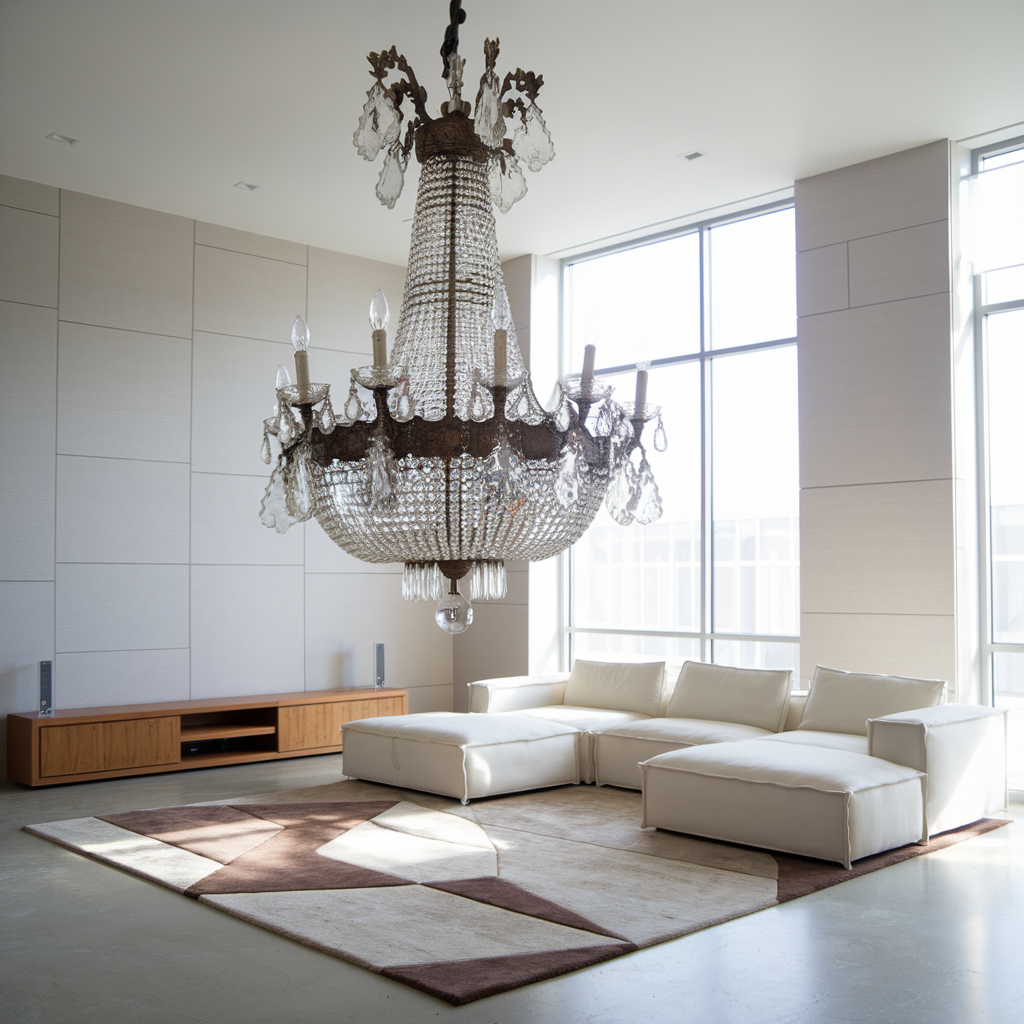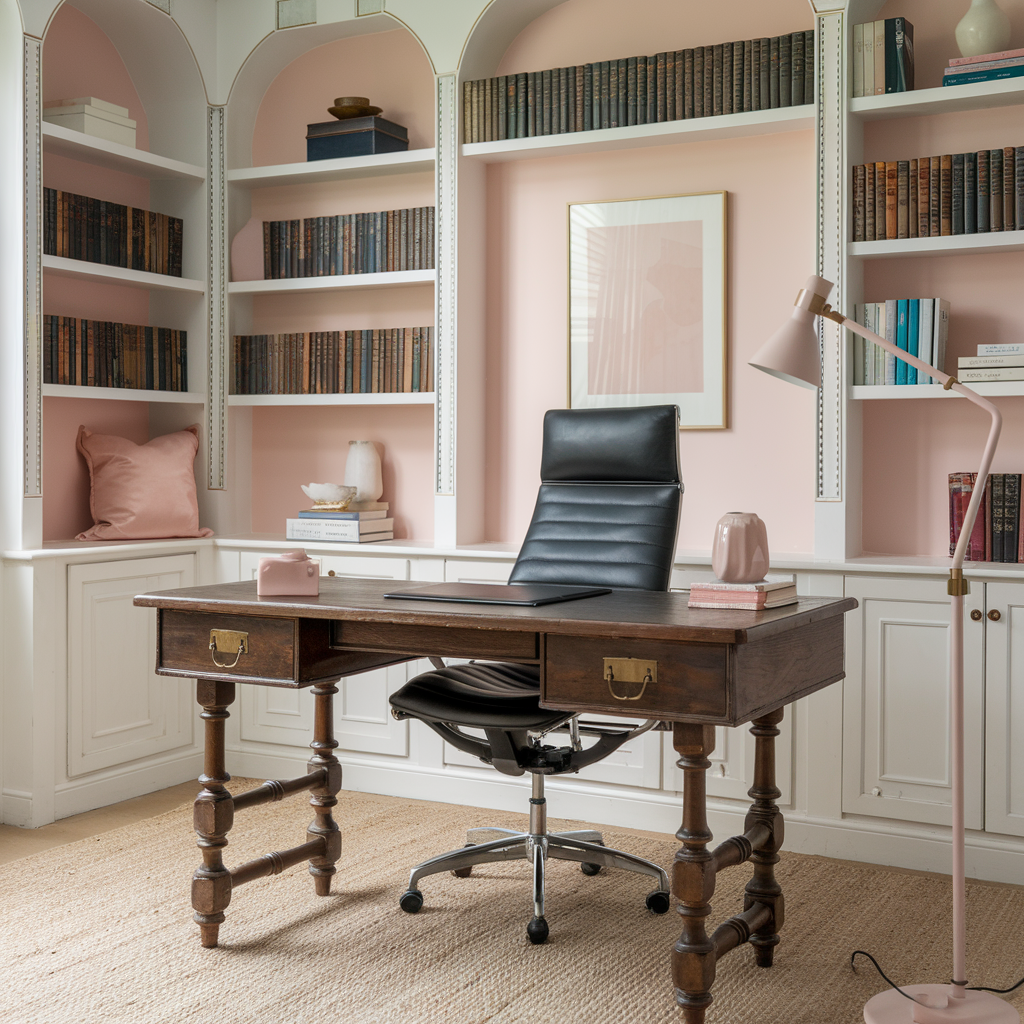Part 1: The Charm of Combining Vintage and Modern Styles
If you’ve ever looked at a space that seamlessly blends vintage charm with modern sophistication, you’ve likely wondered how to achieve that balance in your own home. The good news? It’s not as complicated as it seems! With the right approach, you can create a space that feels both timeless and contemporary, showcasing your personality and design flair.
In this guide, I’ll walk you through 10 perfect ways to mix vintage and modern decor in your home. Whether you’re a seasoned decorator or just dipping your toes into the world of design, these tips will help you bring your vision to life.

1. Start with a Neutral Foundation
When blending vintage and modern, the foundation of your space is key. A neutral base—think white walls, soft beige tones, or light gray flooring—creates a blank canvas. This allows vintage and modern pieces to stand out without overwhelming the room.
Why does this work? Neutral colors provide visual harmony, making it easier to incorporate contrasting styles. For example, a vintage tufted armchair can pop against a backdrop of clean, white walls, while a sleek, modern sofa complements the overall balance.
Pro Tip: Stick to neutrals for larger pieces like sofas or rugs, then layer in colorful or patterned accents for interest.

2. Decide on a Dominant Style
The key to successfully mixing styles is deciding which one takes the lead. Will your home have a primarily vintage vibe with modern accents? Or will the sleekness of modern design dominate with vintage charm sprinkled in?
Choosing a dominant style prevents your space from feeling disjointed. For example, you could pair a striking mid-century modern dining table with vintage wooden chairs. Alternatively, a modern lamp can serve as a chic counterpoint to a room filled with vintage furniture.
Pro Tip: Whichever style you choose to lead, make sure the supporting style feels intentional rather than random.

3. Layer Textures for Depth
Texture is your secret weapon when mixing styles. Modern design often features smooth surfaces like glass, chrome, or polished wood. Vintage decor, on the other hand, thrives on rich, textured materials like worn leather, weathered wood, or soft velvets.
Pairing these textures adds depth and character to a room. Consider placing a modern glass coffee table on top of an antique Persian rug, or juxtaposing a vintage quilt with sleek, contemporary bedding.
Pro Tip: Balance smooth and rough textures to keep the space feeling cohesive.

4. Use Contrasting Materials
One of the most exciting aspects of combining vintage and modern is the interplay between contrasting materials. Imagine the juxtaposition of a rustic wooden sideboard topped with a shiny, minimalist metal sculpture. This contrast creates visual interest and a sense of harmony.
Ideas to try:
- Pair industrial metal shelving with antique porcelain vases.
- Combine a modern, glossy dining table with vintage linen napkins and a hand-carved centerpiece.

Part 2: Transformative Elements to Elevate Your Space
Blending vintage and modern decor isn’t just about finding the right balance—it’s also about making bold choices that add character and showcase your creativity. Let’s explore the next steps to seamlessly integrate the best of both worlds into your home.
5. Incorporate Statement Vintage Pieces
Every room benefits from a standout feature, and vintage pieces are perfect for creating focal points. These unique finds often carry history and personality, adding depth to a modern setting.
Imagine a vintage chandelier hanging above a modern dining table or an ornate antique mirror above a sleek, minimalist console. These pieces act as conversation starters while tying the two styles together.
Pro Tip: Let your statement vintage piece shine by surrounding it with modern, understated elements.

6. Modernize Vintage Finds
Sometimes, all it takes to bridge the gap between vintage and modern is a little creativity. Revitalizing vintage pieces ensures they blend seamlessly into a contemporary space while maintaining their charm.
- Reupholster furniture: Give an old armchair new life with modern, bold fabrics.
- Refinish wood: Sand and stain an antique table for a polished, updated look.
- Repurpose items: Transform a vintage ladder into a bookshelf or an antique chest into a coffee table.
Pro Tip: Small updates, like swapping out old hardware on a dresser for sleek, modern knobs, can make a huge difference.

7. Play with Patterns and Colors
Combining patterns and colors from different eras is an art form that can yield stunning results. Vintage patterns, like florals or paisleys, pair beautifully with modern, minimalist designs to create a layered, curated look.
- Example combos: A mid-century modern sofa in a neutral shade can be enhanced with vintage floral cushions.
- Color balance: Let one color family dominate while introducing accents from the other style. For instance, a modern monochromatic palette can be brightened with pops of vintage-inspired colors like mustard yellow or teal.
Pro Tip: Use complementary patterns sparingly to avoid overwhelming the room.

8. Focus on Art and Accessories
Artwork and small decor pieces are an easy way to blend styles without committing to large, expensive changes. Vintage art, such as oil paintings or black-and-white photographs, can take on new life in modern frames.
Likewise, modern sculptures or abstract prints can add contemporary energy to vintage shelving or mantels. Accessories like throw pillows, vases, and candles can also bridge the gap between eras.
Pro Tip: Mix and match in threes—a vintage accessory, a modern piece, and a neutral item—to create a cohesive look.

Part 3: Perfecting the Balance Between Vintage and Modern
As you put the finishing touches on your space, the focus shifts to functionality and harmony. In this final part, we’ll explore how to make your vintage-modern decor both practical and visually stunning.
9. Keep the Layout Functional
While aesthetics matter, your space should also work for your lifestyle. Combining vintage and modern pieces offers plenty of opportunities to reimagine functionality in your home.
- Vintage meets practicality: An antique dresser can double as a media console, providing storage and charm.
- Modern updates: Use modular furniture to complement vintage items, creating a layout that’s both stylish and efficient.
Pro Tip: Arrange furniture to prioritize flow and usability. Even the most beautiful room should feel inviting and functional.

10. Add Lighting That Bridges the Styles
Lighting is more than just practical—it’s a design element that ties everything together. Choose fixtures that echo elements of both vintage and modern styles.
- Vintage touches: Incorporate Edison bulbs or antique brass fixtures for warmth.
- Modern flair: Pair with sleek, minimalist floor lamps or recessed lighting to maintain balance.
For a dramatic effect, mix lighting sources, like a vintage chandelier in the dining room with contemporary pendant lights in the kitchen.
Pro Tip: Use dimmers to control ambiance and highlight different elements of your decor.

Final Thoughts
Blending vintage and modern styles is about more than aesthetics—it’s about storytelling. Each piece, whether modern or vintage, contributes to a narrative that reflects your taste and personality.
By starting with a neutral base, layering textures, and thoughtfully combining pieces, you can create a harmonious and timeless space. Don’t be afraid to experiment—decorating is an evolving process, and each tweak brings you closer to the perfect balance.
